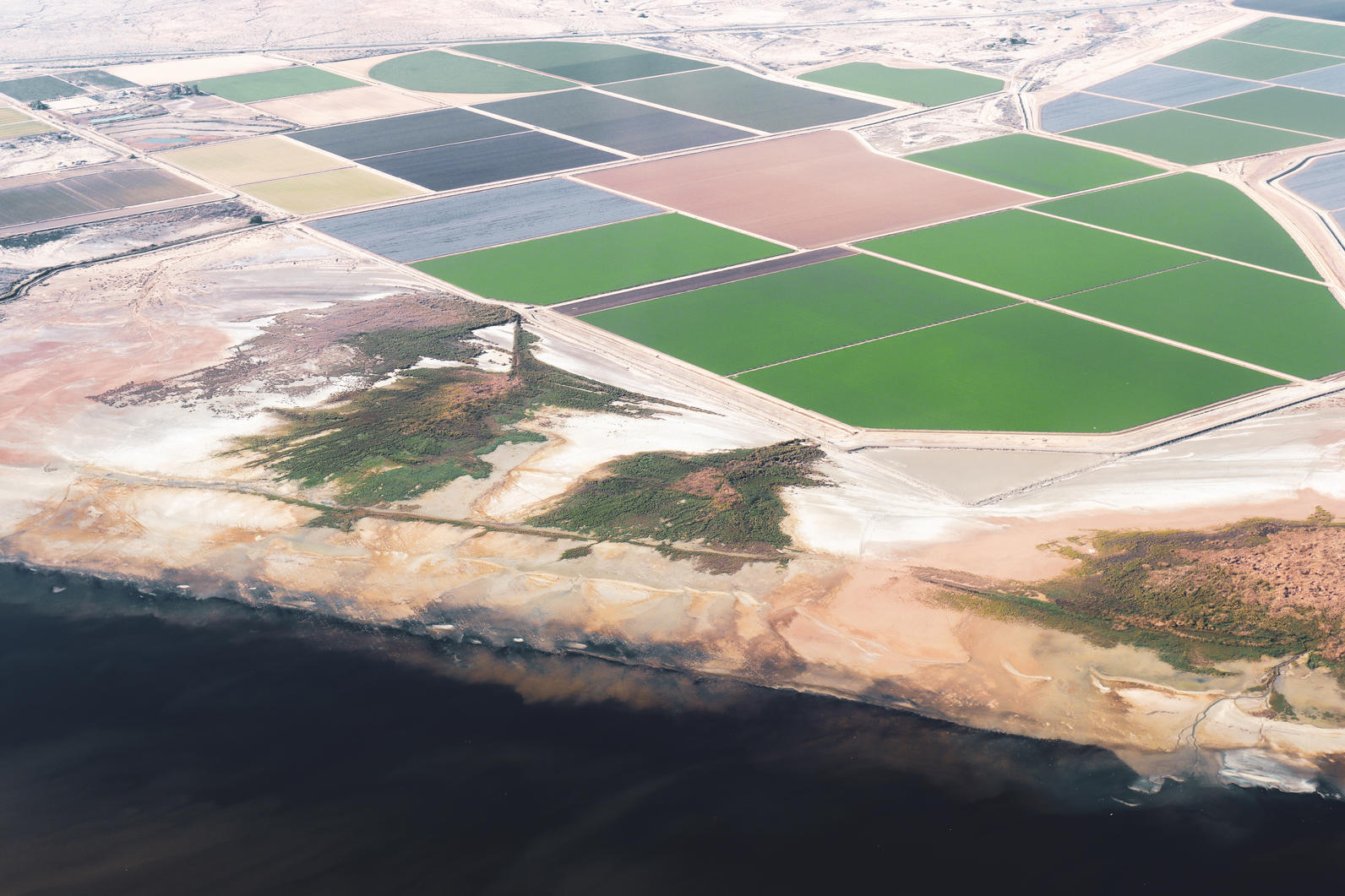The Salton Sea is California’s largest body of water and a critical wildlife habitat for migratory birds. Yet, a quick image search for “Salton Sea” will produce mostly photos of barren wastelands, fish carcass strewn beaches, and murky waters. What exactly is going on here? What is wrong with the Salton Sea?
First, what is the Salton Sea?
The Salton Sea is a terminal lake
In a normal lake system, water flows in from higher elevations and flows out via rivers and streams. In a terminal lake system, water flows in but does flow out of the system except through evaporation. Water does not flow out of the Salton Sea because it is one of the lowest points in the country, a full 225 feet (about 69m) below sea level at its surface. This is the result of tectonic tension between faults that are moving in opposite directions, resulting in a sunken basin known as the Salton Trough.
The Salton Sea is a saline lake
Salt lakes, or saline lakes, are synonymous with terminal lakes. Water carrying salts (and other minerals) flows in, and as water leaves the system through evaporation, those salts stay behind, resulting in water that becomes saltier and saltier over time. This is especially true if the lake loses more water to evaporation than it receives, which is usually the case for terminal lakes in desert environments. When this happens, the system will dry up all together, resulting in salt flats. That destroys habitat for birds and can present respiratory health problems for anyone living nearby, in the form of airborne dust.
Problem: Saline lakes are volatile in the sense that their ecology and composition change over time.

The Salton Sea forms part of the Colorado River Basin
Prior to the damming of the Colorado River, the course of the River would change over time, sometimes carrying it through the Coachella-Imperial region on its way to the Gulf of California. During these times, the region would fill with water, creating a huge, inland sea known as Lake Cahuilla, which could reach sizes of up to 26 times larger than the Salton Sea we know today.
Problem: As is characteristic of drainage basins like the Salton Trough, their composition and ecology are in constant flux. Since the Colorado River is dammed, its natural meandering is no longer possible. The Salton Sea today is sustained mostly by agricultural runoff, not by the natural processes that used to see it fill, refill, and empty over time.

The Salton Sea is an agricultural sump
Natural inflows of water at the Salton Sea carry minerals and salts. However, the majority of water that flows into the Sea comes from Colorado River water, which is channeled to the Coachella and Imperial Valley region via aqueducts to irrigate agricultural fields. Some farms practice irrigation techniques that produce excess water, which then flows into the Salton Sea. This agricultural runoff carries high loads of nutrients from fertilizers used in the fields. So, as water evaporates, the Sea accumulates a higher and higher concentration of fertilizers, affecting the ecosystem and air quality.
Problem(s): With the majority of its inflowing water being essentially wastewater, the Salton Sea becomes a collection pond for this agricultural runoff, what is termed an agricultural sump. As a sump, the Sea does not receive the same protection that a natural protected area, like a national park, would receive.
As the fertilizers and salts concentrate, and the Sea dries, a dry crust, called playa, is exposed, which then is then turned to dust by strong, southern winds blowing during summer months. This dust contributes to extremely poor air quality in the region.
Agricultural runoff rich in fertilizers feed algae, which ‘bloom,’ when conditions are right, resulting in a lack of oxygen in the water. Massive fish die-offs have occurred at the Sea as a result of algal blooms. Fish die-offs also occur due to rising salinity that many fish species cannot tolerate.

The Salton Sea is one of few wetland habitats remaining in California
Of the wetlands that existed in California 150 years ago, less than 10 percent remain today. In the context of shrinking wetland habitats, the Salton Sea has become a critical habitat for migratory birds to stop and rest during their annual journeys.
Problem: As one of the few remaining wetland habitats left in the State, migratory birds, who, travelling thousands of miles between breeding and non-breeding territory, are left with far fewer options than before, posing a huge threat to the survival of these species.
So, what is wrong with the Salton Sea?
- Terminal lakes like the Salton Sea are naturally volatile environments, subject to changes in composition and ecology over time.
- The Salton Sea is sustained mostly by agricultural runoff replete with fertilizers, causing algal blooms that can provoke fish die-offs.
- Agricultural runoff loads the lakebed with fertilizers, which are then introduced into the air as the shoreline recedes. This poses a public health risk to a region with already poor air quality, a risk which is compounded by economic vulnerability experienced by local communities.
- As an agricultural sump, Salton Sea does not receive the same protections that most wildlife areas do.
- The Salton Sea represents one of very few remaining wetland habitats in California, presenting an existential threat to migratory species.
Keep an eye out for a future blog post addressing what is being done at the Salton Sea.
Follow us on Instagram @audubon.saltonsea







